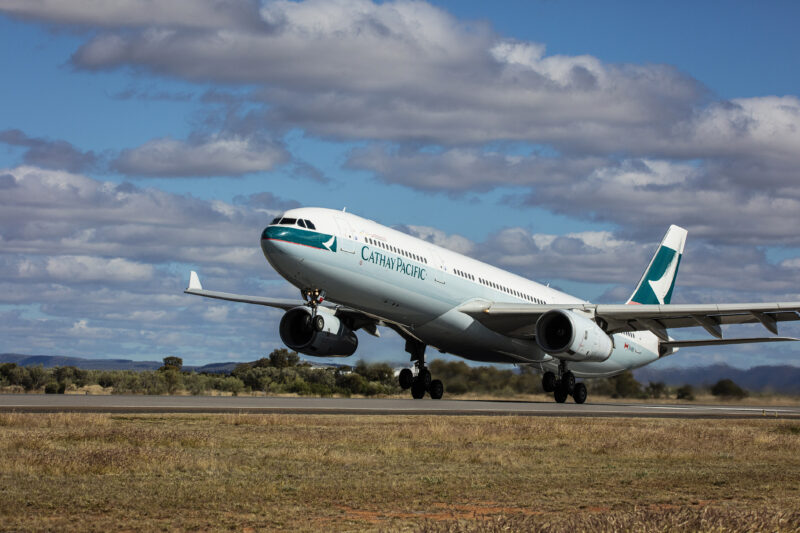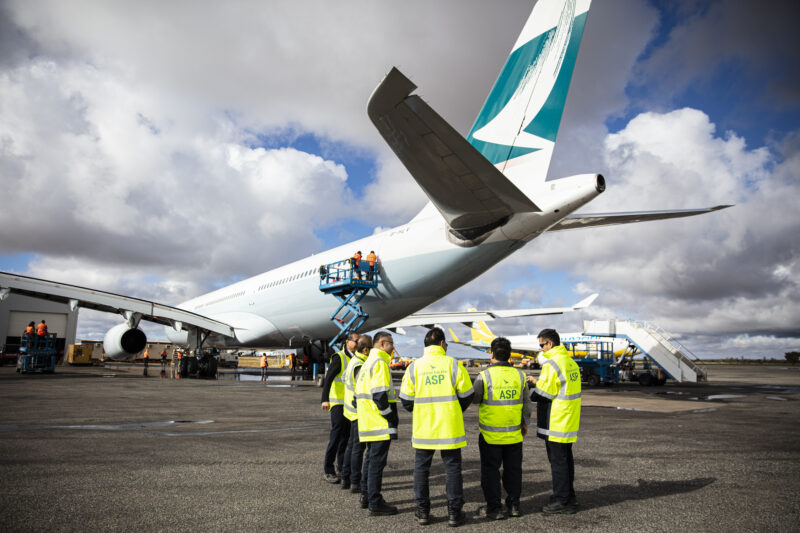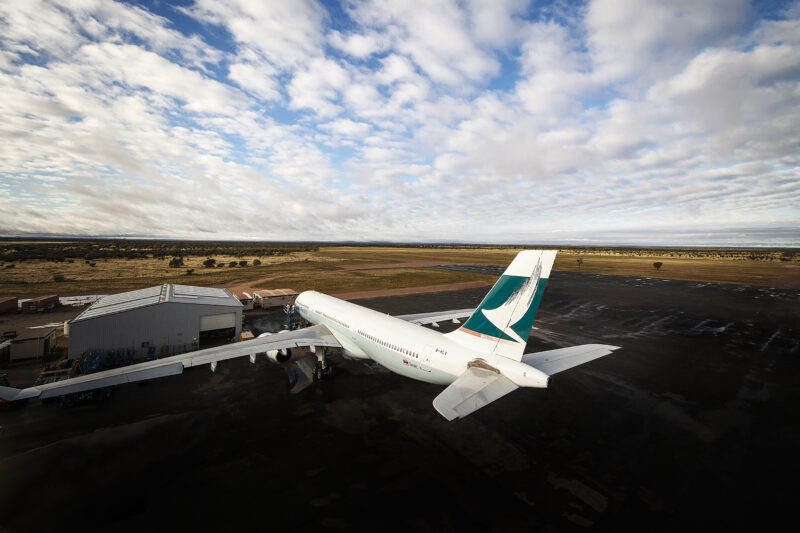Some airlines have recovered a lot quicker than others – with The Cathay Group one of the slower airlines to fully recover from the pandemic.
In a sign it has perhaps turned a corner, the last stored aircraft has been reactivated and has returned to Hong Kong.
The 85th member of its fleet – B-HLV – A Cathay Pacific Airbus A330 has returned to its home base of Hong Kong. This is after the aircraft was parked for four years starting in July 2020.
It returned to Hong Kong on the 6th of June, from Alice Springs where it was stored, via Darwin.
The aircraft will now undergo an extensive hangar maintenance check after four years of being parked in the Australian desert. B-HLV was the first of the Cathay Group’s aircraft to go into long-term parking overseas when the airline chose to park its fleet, both in Alice Springs and Ciudad Real in Spain.
Each aircraft that was long-term parked in Alice Springs underwent a 14-day preservation check when it first arrived, which was then followed by a repeating series of periodic inspections and checks. Over the course of the parking programme in Alice Springs, more than 16,000 of these periodic checks were performed, and a total of 800,000 labour hours were spent performing preservation, periodic and reactivation maintenance.
Furthermore, over 40,000 parts and items of specialised equipment were also shipped from Hong Kong to support the Alice Springs operation. Meanwhile, the Cathay Group’s onsite Quality Assurance team conducted more than 2,000 audits.
In Quotes
Chief Operations and Service Delivery Officer Alex McGowan said:
“Parking and reactivating so many aircraft is a once-in-a-lifetime undertaking, the scale and complexity of which has never been seen before at Cathay. An incredible amount of work goes into keeping an aircraft safe and protected when it isn’t flying, and to then reactivate it for entry back into regular service. To do this for more than 85 aircraft long-term parked overseas, as well as to manage the large number of aircraft that were parked in Hong Kong, is a phenomenal achievement. Our heartfelt thanks go out to the Hong Kong Civil Aviation Department for their invaluable support throughout this process.
“With our fleet now fully reunited, our focus is firmly on investing for the future. The Cathay Group has more than 70 new aircraft on order, with the right to acquire an additional 52 aircraft in the future. We are also exploring options for a new mid-size widebody aircraft. These investments reflect our ongoing confidence in the Hong Kong international aviation hub as we look ahead to the exciting opportunities presented by the Three-Runway System at Hong Kong International Airport when it is fully commissioned by the end of this year.”
General Manager Engineering Operations Bob Taylor said:
“An aircraft that is in long-term parking requires a defined programme of maintenance checks and inspections that are repeated over a regular cycle to ensure it’s preserved in tip-top condition. When it comes to reactivating the aircraft, a rigorous series of checks and inspections must first be accomplished to ensure the aircraft is safe to ferry back from its overseas parking facility. The aircraft then needs to undergo a further series of detailed checks and inspections as part of its scheduled hangar maintenance check.”
“It was truly a team effort that required the support of many departments within the airline as well as key partners including Hong Kong Aircraft Engineering Company (HAECO), Boeing and Airbus, and the local service provider in Alice Springs, Asia Pacific Aircraft Storage (APAS). To manage this body of work across an unprecedented number of aircraft was an incredible achievement by the team, of which I am immensely proud.”
Turning a corner
Whilst the focus is on new and sustainable aircraft, bringing back the last of a parked fleet will mark a mental turning of a page for The Cathay Group, as all the aircraft that had gone are now returned, and will soon be operating commercially for the airline.
Whilst it has taken a lot longer than some other airlines – the cost of storing the aircraft must now be more than it is able to be used in active service.
Whilst a single A330-300s capacity won’t be the beginning and end – it will certainly help as the airline continues to expand its operations, giving work for these aircraft to do.
And more importantly for The Cathay Group – earn money.
Images, The Cathay Group
Welcome to Economy Class and Beyond. Your no-nonsense guide to network news, honest reviews, in-depth coverage, unique research, as well as the humour and madness I only know how to deliver.
Our Social Media pool has expanded. You can find us across most networks as @economybeyond on Twitter, Mastodon, BlueSky, Threads and Instagram!
Also, remember that we are part of the BoardingArea community, bringing you the latest frequent flyer news from around the world.


